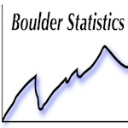- JMP will suspend normal business operations for our Winter Holiday beginning on Wednesday, Dec. 24, 2025, at 5:00 p.m. ET (2:00 p.m. ET for JMP Accounts Receivable).
Regular business hours will resume at 9:00 a.m. EST on Friday, Jan. 2, 2026. - We’re retiring the File Exchange at the end of this year. The JMP Marketplace is now your destination for add-ins and extensions.
- Subscribe to RSS Feed
- Mark Topic as New
- Mark Topic as Read
- Float this Topic for Current User
- Bookmark
- Subscribe
- Mute
- Printer Friendly Page
Discussions
Solve problems, and share tips and tricks with other JMP users.- JMP User Community
- :
- Discussions
- :
- Interpreting measures of accuracy for classification tree
- Mark as New
- Bookmark
- Subscribe
- Mute
- Subscribe to RSS Feed
- Get Direct Link
- Report Inappropriate Content
Interpreting measures of accuracy for classification tree
I would like to know if the misclassification rate I am getting is acceptable. Whare ranges are considered acceptable? How do I relate this rate to the confusion matrix results? In essence, I am trying to evaluate and explain my results. In addition, how do I know if the Lift Curve resulls I am getting are also acceptable? Is there a range, which can be deemed as acceptable or good?
Accepted Solutions
- Mark as New
- Bookmark
- Subscribe
- Mute
- Subscribe to RSS Feed
- Get Direct Link
- Report Inappropriate Content
Re: Interpreting measures of accuracy for classification tree
Hello,
There is no one answer to your question. The questions you are asking is going to depend on your circumstances. For example, compare marketing misclassification rates to medical misclassification rates. What is acceptable in those two fields is going to be very different. In addition, in some applications the overall misclassification rate may be the key metric whereas in other instances you may be more concerened in just one portion of your confusion matrix results. For example, consider medicine, the risk misclassifing a negative subject is often different than the risk of misclassifing a positive subject (providing treament that is not needed vs. not providing treatment that is needed). You have to take your statistics and put them in context of your questions, then interpret.
- Mark as New
- Bookmark
- Subscribe
- Mute
- Subscribe to RSS Feed
- Get Direct Link
- Report Inappropriate Content
Re: Interpreting measures of accuracy for classification tree
Hello,
There is no one answer to your question. The questions you are asking is going to depend on your circumstances. For example, compare marketing misclassification rates to medical misclassification rates. What is acceptable in those two fields is going to be very different. In addition, in some applications the overall misclassification rate may be the key metric whereas in other instances you may be more concerened in just one portion of your confusion matrix results. For example, consider medicine, the risk misclassifing a negative subject is often different than the risk of misclassifing a positive subject (providing treament that is not needed vs. not providing treatment that is needed). You have to take your statistics and put them in context of your questions, then interpret.
Recommended Articles
- © 2026 JMP Statistical Discovery LLC. All Rights Reserved.
- Terms of Use
- Privacy Statement
- Contact Us

